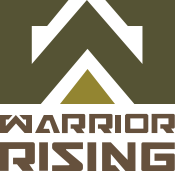
What is a Sphere of Influence and How to Leverage One for Business
Before we talk about what is a sphere of influence and why its critical for many in business, let me first give you a short history lesson to provide you a useful analogy.
If you’re old enough to have lived through parts of the Cold War, or are a student of history, you probably have heard of the term “sphere of influence.” According to the Encyclopaedia Britannica, this principle has its origins in the ancient empires. Each empire had its surrounding area where they got to shape policy and trade rules, without directly ruling the area. For instance, the Romans would trade with surrounding areas, and then help with defense if necessary.
Later on, during the Victorian period, the Germans and British had an agreement on the “sphere of influence” for each country. The agreement stipulated that the British wouldn’t interfere in areas influenced by the Germans, and vice versa. Finally, the biggest recent example of a political sphere of influence is the Cold War. Here, you had the Soviet Union exercising its influence on Eastern European countries. Then, the Americans and British had their sphere of influence in Western Europe and most of the Americas.
Most recently, we have seen both Russia try to revive the Soviet Sphere as well as China trying to expand their spheres of influence in Asia and globally through their Belt and Road Initiative, fostering economic development internationally, as well as the construction of new military bases in the South Pacific. Both of these developments have made the United States tap into its own spheres of influence in the European Economic Union, Japan, Korea, and Southeast Asia in order to counter-balance their efforts. The expansion of NATO to include Sweden and Finland has only expanded its own sphere of influence in European politics.
As you can see, spheres of influence in politics are as strong as ever today, but they are also a force in business and personal relationships. And when we convert that sphere of influence digitally, it becomes a powerful form of influencer collaboration that can drive real business.
How a Sphere of Influence is Used in Business Today
In business, we think of a sphere of influence as the people who find what we say trustworthy. This might mean that someone asks your opinion on what product is best. For example, if you are an expert at giving financial advice, someone might ask you about the stock pick of the week. Or, someone looking for a used car might ask a trusted mechanic what is easy to fix or known for its reliability. This position of trust is used in various ways when nurturing business relationships.
Let’s take a look at some of the more popular business areas in which a sphere of influence is used in business today.
Realtors

For most people, the biggest purchase they’ll ever make is a home. Whether that’s a two bedroom starter home or a mansion with lots of land, the buyer will typically hire a Realtor. Then, this Realtor will help the buyer find a great house at an affordable price. This person is being paid for expertise, advice, and logistical support.
Let’s say that the Realtor does a great job with a particular sale. For instance, by dealing with a seller who keeps trying to change the rules during escrow (this does happen, unfortunately). Finally, the Realtor cuts through the nonsense and gets that sale closed. In such cases, a buyer is typically all too happy to recommend that Realtor to a friend or colleague who wants to buy or sell a home.
Here, we see two examples of the sphere of influence. First, the Realtor influences the buyer to choose a particular house, based on his or her experience and professional judgement. Second, the buyer rewards great service by giving a referral. In both cases, the person giving advice is exercising influence. Over time, the Realtor will get more referrals, and the person making the referral will become more trusted as reliability is proven. Some Realtors will send postcards or similar on occasion to let a buyer or seller know they’re still in business, just in case the need for another real estate transaction arises. In that way, they’re keeping track of their sphere of influence.
In this way clients become part of a realtor’s sphere of influence, but it doesn’t stop there. Friends and family are often an important part of an agent’s sphere of influence. And let’s not forget about all of the other companies that need to work together to serve the consumer: mortgage bankers, home inspection professionals, financial advisors, insurance salespeople, etc. These professional relationships that become part of an agent’s sphere of influence can also become a powerful source of leads and introductions for both parties over time.
Insurance salespeople
Here’s a similar example. When we buy insurance, it’s sometimes hard to know how much insurance we actually need. Worse, knowing how to get the right insurance for an affordable price can seem daunting. The more complicated our insurance needs, the worse this problem becomes. Insurance agents help us bridge that gap. A good one will listen, evaluate, and recommend. Then, if the plan needs tweaks, these can be made. In this way, the agent is working within their sphere of influence.
As with Realtors, insurance salespeople need referrals. Especially when someone new moves into town or has a major life change, that person might ask around for recommendations for a new insurance agent. Then, they’ll often call a recommended agent for advice.
Unlike Realtors, insurance agents often need to deal with the same people many times over the course of a few years. For that reason, they typically work harder to keep up relationships with existing customers. One example of this might be an auto insurance agency that sends swag with the agency name on it to the customer whenever the policy is up for renewal. Another way this can be done is to occasionally call a customer to see if their needs have changed recently.
Similar to real estate agents, though, professional relationships are also an important part of an insurance salesperson’s sphere of influence.
General Sales

If there’s one thing that sales professionals are known for, it’s constant networking and follow up. Some will search LinkedIn for prospects, and others attend conferences. Over time, they develop quite a list of leads that are then followed up on. Then, like other kinds of sales people, they’ll ask for referrals.
Keeping up with these leads can be challenging, which is why CRM software and other resources are often used heavily. Email marketing, for instance, is used to maintain a sphere of influence over sales prospects. So is content marketing, which gains customer loyalty through education. This way, once a customer contacts the sales department, they already have an idea of what’s being offered. Sales then guides a customer to the most advantageous choice.
How Social Media Allows You to Extend and Keep in Better Touch with Your Current Sphere of Influence
One of the challenges that sales and marketing professionals face is keeping track of their efforts to expand their sphere of influence as well as regularly keeping in touch with them to maintain top of mind mindshare. While CRM software is important for maintaining customer contact information, the information has to be used to better keep in touch with their sphere of influence.
Among the more effective tools for leveraging a sphere of influence which is also the most under-utilized by many is social media. Here are some ways this can be done.
Prospecting
It used to be that sales prospecting required a lot of painstaking work that included cold calls and sending letters. While these methods are still used on occasion, social media is rapidly taking over as a method of choice to expand one’s sphere of influence.
Some social networks not only embrace this change, they encourage it. For instance, LinkedIn has a premium service for sales professionals. Unlike ordinary LinkedIn members, subscribers to Sales Navigator can more easily get sales leads. For instance, they can instantly become more contactable by being part of the OpenLink network and can send direct messages to top prospects in the form of InMails. Enterprise level members can even plug LinkedIn profile information directly into CRM software such as Salesforce.
Content distribution
Another way in which companies or individuals can expand and maintain their sphere of influence on social media is by using it for content distribution. For instance, many business websites have blogs. These contain all kinds of useful information, but it’s hard to find them without both proper SEO and distribution. So, companies will use social media to distribute the content and drive site traffic. Maybe they advertise the post through illustrations on Instagram. Or, they might post the content on LinkedIn directly or through a link. Facebook and Twitter, likewise, are great ways to drive traffic.
Smart real estate agents and salespeople take it one step further by leveraging company information and sharing it in social media with their networks to both keep in touch with and influence their sphere of influence. I have seen savvy salespeople even curate 3rd part content that is geared not towards promoting their own company but in supporting their sphere of influence.
Updates
While content distribution focuses on sharing professional content with your sphere of influence that is often derived from your corporate marketing, social media updates allow you to keep in touch all the time simply by being active on social media posting lifestyle content or engaging on the feeds of your sphere with influence.
As with content distribution, the point of updates is to keep track of and engage with your sphere of influence. Whether it’s the travel junkie posting the latest trip photos or commentary on the latest happenings, updates allow social media followers to see what is going on. Sales people often will post about the latest product launch, for instance. Similarly, there might be regulatory changes in the industry that require the attention of customers. These can be mentioned on social media with an invitation to follow up.
Even a relatable photo of yourself will maintain mindshare with your sphere of influence who, like the rest of us, spend more and more time on social media.
How to Leverage Your Sphere of Influence for Influencer Marketing
In many ways, influencer marketing is as old as word of mouth. Think about it this way: friends and social contacts tend to ask each other for advice. If I move to another town, I’ll need a barber, and honest car mechanic, and a great physician. Besides calling my insurance company for a doctor referral, there’s a good chance I will reach out to people I know. Finding a barber might involve looking at Yelp reviews, and the same goes with an honest mechanic. However, I probably will talk to people I’ve gotten to know in my new area. Later, after I’m established, I’ll be happy to tell the next newcomer where to get the car fixed. From this phenomenon, we can see how influencer marketing developed.
Those sales professionals who have been networking and developed their own sphere of influence might be considered nano influencers. From that perspective, they can yield their digital influencer and leverage their network in many ways.
Create your own platform

The more you are considered an influencer, the more your sphere of influence will listen to you and the easier it will be to expand your influence.
As I have said before, blogging is a great way to become an influencer. As people read your posts and follow your recommendations, they’ll begin to see you as an expert. It doesn’t really matter what subject you’re blogging about, but as a general rule you’ll want to talk about your specific niche for best results.
Over time, your blog, augmented by your posting about it in social media, will begin to generate inbound traffic for you and generate leads. It will also help you find more professionals to add to your sphere of influence who reach out to you from seeing your blog content.
Solicit online testimonials
Often, your customers and employees are your best advocates. Furthermore, some of them are influencers themselves. For customers who aren’t social media influencers, offer an incentive to post a review on sites like Yelp, Google Business, and Angie’s List. In this case, you’re converting the organic referral network into an online sales-generating machine. Incentives can include a drawing for gift cards, purchase discounts, and so forth. This is an inexpensive way to increase your profile. Just make sure that what you’re doing is FTC compliant.
Encourage your friends and family to give referrals

Sometimes friends and family are the best influencers, especially for small businesses. For example, the mother of a mechanic who specializes in a particular make of car can help her son get business. In this case, she might mention his expertise to someone who owns that type of car. Or, members of a social club might mention that a different member is one of the best dentists in the area. Word of mouth has always been a powerful marketing tool.
In the age of social media, this can be done online and through one’s sphere of influence. For instance, most of us have seen “recommendation requests” on Facebook. Here, someone is asking their network if they know someone who can provide a given service. Encourage your sphere of influence to spread the word in these situations. While they may not come around often for some of us, other people are known for being experts on who’s good at what. Those people often have opportunities to give recommendations.
Are You Ready to Expand Your Sphere of Influence?
As you can see, your sphere of influence can be an important driver of sales when used properly. At the same time, most of us have benefitted from everyday influencers in our own lives. Modern social media-based influencer marketing is just the latest evolution of getting referrals when you understand what is a sphere of influence and how you can leverage one digitally.
Original document, What is a Sphere of Influence and How to Leverage One for Business
Source: Neal Schaffer
Adapted for Academy.Warriorrising

